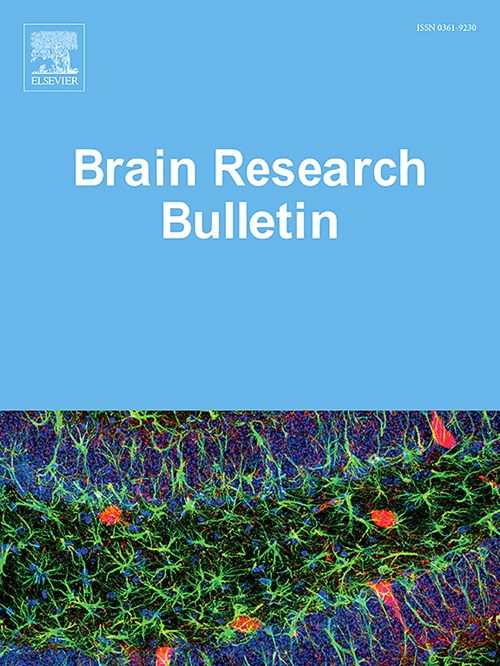Glial cell crosstalk in the local microenvironment following spinal cord injury
IF 3.5
3区 医学
Q2 NEUROSCIENCES
引用次数: 0
Abstract
Spinal cord injury (SCI) has a high incidence, significant rates of disability, and substantial economic costs. The response of glial cells is crucial for spinal cord regeneration following SCI. However, the roles of various glial cell types in SCI pathology and their interactions with other cellular targets remain poorly understood. Using single-cell RNA sequencing, we characterized the local microenvironment following SCI and isolated three glial cell types—microglia, astrocytes, and oligodendrocytes—at the injury site. Immunofluorescence confirmed the differential expression of these cell types in spinal cord tissues. Four subtypes of microglia were identified: activated, dividing, homeostatic, and inflammatory. Astrocytes were categorized into 11 clusters, while oligodendrocytes were classified into eight clusters. Enrichment analysis indicated that the loss of oligodendrocytes was associated with ferroptosis. The glial cell crosstalk network revealed various interactions, including TIMP1-FGFR2 and PLXNB2-PTN in astrocytes and oligodendrocytes, as well as LGALS3-MERTK, GPR37L1-PSAP, TFRSF1A-GRN, and PGRMC2-CCL4L2 in astrocytes and microglia. A total of 75 drugs were identified through target-drug screening. This study suggests potential differentiation and intricate crosstalk among these three cell types, provides a theoretical framework for simulating the glial cellular microenvironment of SCI, and establishes a foundation for future interventions aimed at targeting various glial cell processes in the treatment of SCI.
脊髓损伤后局部微环境中的神经胶质细胞串扰
脊髓损伤(SCI)发病率高,致残率高,经济成本高。神经胶质细胞的反应对脊髓损伤后的脊髓再生至关重要。然而,各种胶质细胞类型在脊髓损伤病理中的作用及其与其他细胞靶点的相互作用仍然知之甚少。利用单细胞RNA测序,我们表征了脊髓损伤后的局部微环境,并在损伤部位分离出三种胶质细胞类型——小胶质细胞、星形胶质细胞和少突胶质细胞。免疫荧光证实了这些细胞类型在脊髓组织中的差异表达。鉴定出四种小胶质细胞亚型:激活型、分裂型、稳态型和炎症型。星形胶质细胞分为11个簇,少突胶质细胞分为8个簇。富集分析表明少突胶质细胞的缺失与铁下垂有关。胶质细胞串音网络揭示了多种相互作用,包括星形胶质细胞和少突胶质细胞中的TIMP1-FGFR2和PLXNB2-PTN,以及星形胶质细胞和小胶质细胞中的LGALS3-MERTK、GPR37L1-PSAP、TFRSF1A-GRN和PGRMC2-CCL4L2。通过靶药筛选共鉴定出75种药物。本研究提示了这三种细胞类型之间的潜在分化和复杂的串扰,为模拟脊髓损伤的胶质细胞微环境提供了理论框架,并为未来针对多种胶质细胞过程干预脊髓损伤的治疗奠定了基础。
本文章由计算机程序翻译,如有差异,请以英文原文为准。
求助全文
约1分钟内获得全文
求助全文
来源期刊

Brain Research Bulletin
医学-神经科学
CiteScore
6.90
自引率
2.60%
发文量
253
审稿时长
67 days
期刊介绍:
The Brain Research Bulletin (BRB) aims to publish novel work that advances our knowledge of molecular and cellular mechanisms that underlie neural network properties associated with behavior, cognition and other brain functions during neurodevelopment and in the adult. Although clinical research is out of the Journal''s scope, the BRB also aims to publish translation research that provides insight into biological mechanisms and processes associated with neurodegeneration mechanisms, neurological diseases and neuropsychiatric disorders. The Journal is especially interested in research using novel methodologies, such as optogenetics, multielectrode array recordings and life imaging in wild-type and genetically-modified animal models, with the goal to advance our understanding of how neurons, glia and networks function in vivo.
 求助内容:
求助内容: 应助结果提醒方式:
应助结果提醒方式:


